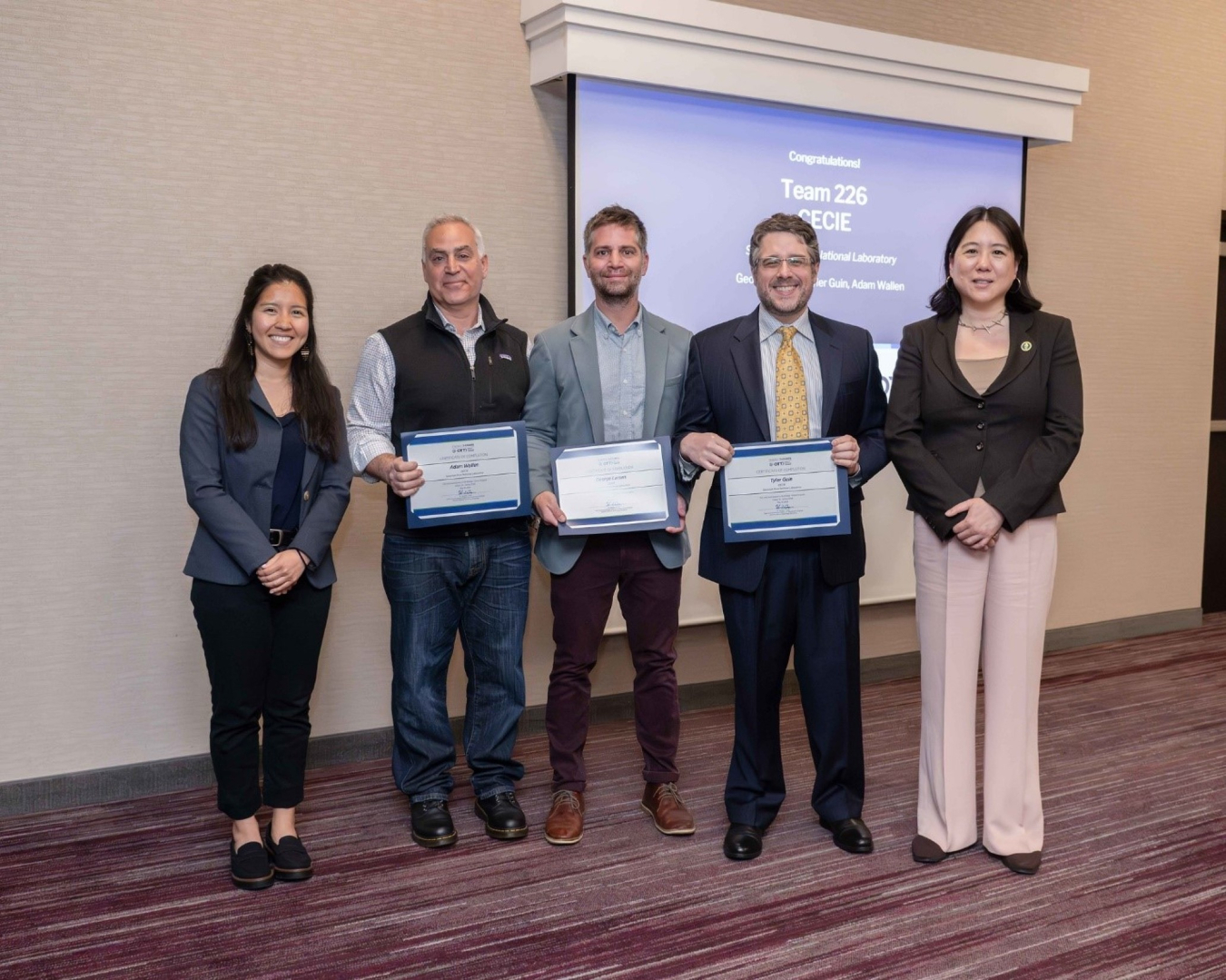Savannah River National Laboratory made its debut participation in the OTT Energy I-Corps program with the “Controlled Equilibrium Catalytic Isotope Exchange” team, or CECIE.
Office of Technology Transitions
September 13, 2024Savannah River National Laboratory (SRNL) made its debut participation in the Office of Technology Transitions’ (OTT) Energy I-Corps program with the “Controlled Equilibrium Catalytic Isotope Exchange” team, or CECIE. OTT’s Energy I-Corps program offers an intensive, 2-month commercialization training to DOE National Lab Complex teams to set their clean energy technology up for a successful market launch. In Cohort 18, the CECIE team gained valuable insights including discovering new potential markets for their deuterium process. Originally focused on creating solvents, the team pivoted toward deuterium production, resulting in a more cost-effective process. The team credits the Energy I-Corps program with sparking entrepreneurial thinking and inspiring future participation from lab colleagues. Team CECIE was funding by OTT.
“We didn’t know how much work it was going to be, but the value I got out of it definitely outweighed the effort,” said George Larsen, principal research scientist at SRNL. “Now I want to encourage other people in our lab to participate because of how rewarding the experience was and also [by] having peers who have gone through the program can prepare others for what’s about to happen.”
Larsen and his team plan to serve as ambassadors for Energy I-Corps and will host an information session at SRNL during the next call for participants.

“There’s so much to be leveraged from [Energy I-Corps] to make your research more impactful,” he said. “The program is particularly suited to answer the question: What is a commercial application for your research? It’s amazing to have an opportunity to look at out-of-the-box applications to see how those might translate to real-world impact.”
Deuterated molecules are often more stable because the bonds with deuterium are stronger compared to bonds within their non-deuterated counterparts.
“If you put deuterium in battery electrolytes, then the battery can last twice as long,” Larsen said. “Adding deuterium in certain spots on a medicine can reduce side effects and increase efficacy because it changes how the molecules move through the body.”
Deuterated molecules are typically expensive to produce, and the reaction can be slow to complete. However, SRNL’s CECIE process recovers the deuterium in less time and the process is more economical.

Through the Energy I-Corps program, the CECIE team realized their initial market assumptions were not correct. Prior to focusing on deuterium production, the team was exploring production of a traditionally resource intensive solvent.
“We thought we could introduce a solvent that’s not currently made because it’s too expensive or too difficult,” Larsen said. “But we discovered most people have adapted to the existing supply of deuterated materials and our original idea would not be a very large market.”
However, while conducting this market research, the team was pleasantly surprised to uncover potential customers in the medical field interested in deuterated glucose.
“Some cutting-edge researchers are using deuterated glucose to do MRI imaging of tumors,” Larsen said. “By measuring the deuterium signal of the glucose metabolism, we can extract more information about the tumor than by traditional methods, while avoiding current radiation exposure.”
Based on this, the CECIE team is going to look at making deuterated glucose to reduce the cost of its current process. A patient currently pays more than $10,000 for tumor imaging using deuterated glucose and the CECIE team’s goal is to get it down to less than $1,000.
Larsen credits Energy I-Corps with his new interest in the business world.
“It definitely sparked my entrepreneurial identity,” he said. “This is something we could actually do—we could start a company. Now I have a better vision of how our technology impacts the world.”

